‘Butterfly acoustical skin’ – new method of reducing aero acoustical noise for a quiet propeller
DOI: 10.23977/jemm.2019.41001 | Downloads: 279 | Views: 10364
Author(s)
Igor S. Kovalev 1
Affiliation(s)
1 Science and Technology Laboratory, Kinneret College, Emek Hayarden, 15132, Israel. Correspondence: [email protected]
Corresponding Author
Igor S. KovalevABSTRACT
An experimental investigation was conducted on the effect ‘butterfly acoustical skin’ (metallic version of the lepidopterans scale coverage) on the acoustic performances of two - bladed propeller (diameter of 1200 mm, airfoil sections of NACA 2415, rotating speed of 1780 rpm, Re ≈ 2 × 105) in a low – speed straight through a wind tunnel. Attention was initially directed to this problem by observation of the porous scales and porous scale coverage of lepidopterans as well as other studies indicating the noise suppression of flying lepidopterans by wing appendages. The property of the moth coverage allows these insects to overcome bat attacks at night. These appendages are very small (size: 30 – 200 µm) and have a various porous structures. I discuss both many different micro – and nanostructures of the porous scales, and many differences in details among various structures of the porous scale coverage of lepidonterans. I consider here only porous scales of butterflies Papilio nireus, Nieris rapae, Deelias nigrina, male Callophrys rubi, male Polyommatus daphnis, butterfly Papilio palinurus as well as porous scale coverage of cabbage moth, moth of Saturniidae family and moth of Noctuoidea family. The evolutionary history of lepidopterans and the properties of lepidopterans scale coverage are briefly discussed as well as different methods of reducing aero acoustic noise of aircrafts.
The design of ‘butterfly acoustical skin’ with a hollow region imitates the cover hollow wing scale of the Papilio nireus butterfly. The design of ‘butterfly acoustical skin’ with a porous region imitates the cover hollow wing scale of the Pieris rapae butterfly, and from the cover hollow wing scale of the Delieas nigrina butterfly. Results indicate that the total sound pressure level of the rotating propeller with hollow skin is more than 2 dB lower with respect to the one with the smooth skin; and the total sound pressure level of the rotating propeller with the porous hollow skin is more than 4 dB lower with respect to the one with the smooth skin. The modification of acoustical effects on the rotating propeller with smooth ‘butterfly acoustical skin’ with a porous region was found to be to an acoustic absorption and to a dissipation of turbulent energy and to a reducing influence on noise generated. The same principles of the propeller noise reduction mechanism can explain by smooth ‘butterfly acoustical skin’ with a hollow region.
KEYWORDS
‘butterfly acoustical skin’, moth, noise reduction, porous scales, propeller.CITE THIS PAPER
Igor S. K., ‘Butterfly acoustical skin’ – new method of reducing aero acoustical noise for a quiet propeller. Journal of Engineering Mechanics and Machinery (2019) Vol. 4: 1-28.
REFERENCES
[1] Benyus, J. M. Biomimicry: Innovation Inspired by Nature (New York: William Morrow); 1997; p. 320.
[2] Mascha, E. Uber die Schwungfedern. Zeitschrift fur wissenschaftliche Zoologie. 1903, 77, 606 – 551.
[3] Sarradj, E. A. Fast Signal Subspace Approach for the Determination of Absolute Levels from Phased Microphone Array Measurements. Journal of Sound and Vibration. 2010, 329, 1553 -1569.
[4] Graham, R. R. The Silent Flight of Owls. Journal of the Royal Aeronautical Society. 1934, 286, 837 – 843.
[5] Howe, M. Aerodynamic noise of a serrated trailing edge. Journal of Fluids and Structures. 1991, 5, 33–45.
[6] Howe, M. Noise produced by a sawtooth trailing edge. Journal of the Acoustical Society of America. 1991, 90(1), 482–487.
[7] Herr, M. & Dobrzynski, W. Experimental investigation in low-noise trailing edge design. AIAA Journal. 2005, 43(6), 1167–1175.
[8] Herr, M. Design criteria for low-noise trailing-edges. 13th AIAA/CEAS Aeroacoustics Conference. 2007. 2007-3470, 21–23 May.
[9] Geyer, T.; Sarradj, E. and Fritzsche, C. Measurement of the Noise Generation at the Trailing Edge of Porous Airfoils. Experiments in Fluids. 2010, 48(2), 291 – 308.
[10] Lian, C. and Zhuge, Y. Optimum Mix Design of Enhanced Permeable Concrete - an Experimental Investigation. Construction and Building Materials. 2010, 24, 2664-2571.
[11] Soderman, P. Aerodynamic effects of Leading Edge Serrations on a two dimensional Airfoil. NASA Technical Memorandum. TM X- 2643. 1972.
[12] Guidati, G.; Ostertag. J. and Wagner, S. Prediction and reduction of wind turbine noise: an overview of research activities in Europe. AIAA Paper 2000-0042, 2000.
[13] Simmons, J. A. and Vernon, J. A. Echolocation: discrimination of targets by the bat Eptesicus fuscus. J. Exp. Zoo. 1971, 176, 315–328.
[14] Simmons, J. A.; Lavender, W. A.; Lavender, B. A.; Doroshow, C. A.; Kiefer, S. W.; Livingston, R. and Scallet, A. C. Target structure and echo spectral discrimination by echolocating bats. Science. 1974, 186,1130 – 1132.
[15] Schnitzler, H. U. Die ultraschall-ortungslaute der hufeisen-fledermause (Chiroptera – Rhinolophidae) in verschiedenen orientierungs-situationen. Z. Vgl. Physiol. 1968, 57, 376–408.
[16] Kovalev, I. S. Acoustic properties of wing scaling in Noctuid Moth. Entomological Review. 2003, 82 (2), 270 – 275.
[17] Kovalev, I. S. and Brodsky, A. K. Of the role that elasticity and scales coating of the wings play in the flight stability of insects. Bulletin of the S. Petersburg State University. 1996, 3 (3), 3-7.
[18] Roeder, K. D. Echoes of ultrasonic pulses from flying moths. Biol. Bull. 1963, 124, 200 –210.
[19] Kovalev, I. S. Effect of the scales coverage of the moth gastropacha populifolia esper (Lepidoptera, lasiocampidae) on the reflection of the bat echolocation signal. Entomological Review. 2004, 83, 513 – 515.
[20] Ntelezos, A.; Guarato, F. and Windmill, J. F. C. The anti-bat strategy of ultrasound absorption: the wings of nocturnal moths (Bombycoidea: Saturniidae) absorb more ultrasound than the wings of diurnal moths (Chalcosiinae: Zygaenoidea: Zygaenidae), Biology Open. 2017, 6, 109 – 117.
[21] Jinyao Zeng, Ning Xiang, Lei Jiang, Gareth Jones, Yongmei Zheng, Bingwan Liu, Shuyi Zhang. Moth Wing Scales Slightly Increase the Absorbance of Bat Echolocation Calls. PloS One. 6 : e27190.
[22] Zhiyuan Shen, Thomas R. Neil, Daniel Robert, Bruce W. Drinkwater, and Marc W. Holderied. Biomechanics of a moth scale at ultrasonic frequencies. Proceedings of the natural Academy of Sciences. 2018, 115:48, 12200-12205.
[23] Capinera, John L. Encyclopedia of Entomology. Butterflies and moths. 4, 2nd ed.: Springer, 2008; pp. 626–672.
[24]Brown. The book of butterflies, sphinxes and moths; illustrated by one hundred and forty-four engravings, coloured after nature; in three volumes, 1832.
[25] Ingram, A. L.; Parker, A. R. A review of the diversity and evolution of photonic structures in butterflies, incorporating the work of John Huxley (The Natural History Museum, London from 1961 to 1990). Phil. Trans. R. Soc. B. 2008, 363, 2465 – 2480.
[26] Weber, H. Lehrbuch der entomologie. Veslag Gustav Fischer. 1933, p. 728.
[28] Corkery RW, Tyrode EC. On the colour of wing scales in butterflies: iridescence and preferred orientation of single gyroid photonic crystals. Interface Focus. 2017, 7: 20160154, pp 1-16.
[29] Schröder-Turk G.E., Wickham S., Averdunk H., Brink F., Fitz Gerald J.D., Poladian L., Large M.C.J., Hyde S.T. The chiral structure of porous chitin within the wing-scales of Callophrys rubi. Journal of Structural Biology. 2011, 174, pp. 290-295.
[30] Kükenthal, W. Handbuch der Zoologie/Handbook of Zoology. 2003.
[31] Hooijdonk, E.; Vandenbem, C.; Berthier, S. and Vigneron, J. Bi-functional photonic structure in the (Papilionidae): modeling by scattering-matrix optical simulations. Opt. Express. 2012, 20, 22001 – 22011.
[32] Michielsen, K.; Stavenga, D. G. Gyroid cuticular structures in butterfly wing scales: biological photonic crystals. J. R. Soc. Interface. 2008, 5, 85–94.
[33] Morris, R. B. Iridescence from diffraction structures in the wing scales of Callophrys rubi, the Green Hairstreak. J. Entomol. (A). 1975, 49, 149–154.
[34] Stavenga, D. G.; Stowe, S.; Siebke, K.; Zeil, J. & Arikawa, K. Butterfly wing colours: scale beads make white pierid wings brighter. Proc. R. Soc. B. 2004, 271, 1577–1584.
[35] Lou, S.; Guo, X.; Fan, T and Zhang, D. Butterflies: inspiration for solar cells and sunlight water-splitting catalysts Energy. Environ. Sci. 2012, 11, 9195 – 9216.
[36] Trzeciak, T. M.; Wilts, B. D.; Stavenga, D. G. and Vukusic, P. Variable multilayer reflection together with long-pass filtering pigment determines the wing coloration of papilionid butterflies of the nireusgroup. Opt. Express. 2012, 20, 8877 - 8890.
[37] Mille, C.; Tyrode, E. C. and Corkery, R. W. 3D titania photonic crystals replicated from gyroid structures in butterfly wing scales: approaching full band gaps at visible wavelengths. RSC Adv. 2013, 3, 109 – 117.
[38] Biró, L. P.; Bálint, Zs.; Kertész, K. et al. Role of photonic-crystal-type structures in the thermal regulation of a Lycaenid butterfly sister species pair. Phys. Rev. E. 2003, 67, 021907-1–7.
[39] Tam, H. L.; Cheah, K. W.; Goh, D. and Goh, J. Iridescence and nano-structure differences in Papilio butterflies. Optical Materials Express. 2013, 3, 1087 – 1092.
[40] Kovalev, I. S. and Brodsky, A. K. Structure and some functional characteristics of the scale coverage in the cabbage moth Barathra brassicae L. Lepidoptera, Noctuidae. Entomological Review. 1996, 75 (3), 530 – 540.
[41] Kovalev, I. S. The Effect of 'Butterfly skin' with Rough Internal Surface on the Performances of an Oscillating Airfoil, International Journal of Flow Control, 2014, 6, 125 – 140.
[42] Hall, J. P. W.; Robbins, R. K. and Harvey, D. J. Extinction and biogeography in the Caribbean: new evidence from a fossil riodinid butterfly in Dominican amber. Proceedings of the Royal Society of London B. 2004, 271, 797 – 801.
[43] Grimaldi, D. and Engel, M. S. Evolution of the Insects (Cambridge University Press). 2005, p. 755.
[44] Nachtigall, W. Die aerodinamische Funrtion der Schmetter¬lingsschuppen. Naturwissenschaften. 1965, 52 (9), 216 – 217.
[45] Kovalev, I. S. The Functional Role of the Hollow Region of the Butterfly Pyrameis atalanta (L.). Scale Journal of Bionic Engineering. 2008, 5, 224 – 230.
[46] Wasserthal, L. T. The role of butterfly wings in regulation of body temperature. Journal of Insect Physiology. 1975, 21, 1921 – 1930.
[47] Vukusic, P. and Sambles, J. R. Photonic structure in biology. Nature. 2003, 424, 852 – 855.
[48] Burghardt, F.; Knüttel, H.; Becker, M. and Fiedler, K, Flavonoid wing pigments increase attractiveness of female common blue (Polyommatus icarus) butterflies to mate-searching males. Naturwissenschaften. 2000, 87, 304 – 307.
[49] Brunton, C. and Majerus, M. Ultraviolet colours in butterflies: intra-or inter-specific communication. Pro. R. Soc. B. 1995, 260, 199 – 204.
[50] Mallet, J. and Singer, M. Individual selection, kin selection, and the shifting balance in the evolution of warning colours: the evidence from butterflies. Biol. J. Linn. Soc. 1987, 32, 337 – 350.
[51] Brakefield, P. and Liebert, T. Evolutionary dynamics of declining melanism in the peppered moth in the Netherlands. Proc. R. Soc. B. 2000, 267, 1953 – 1957.
[52]Kingsolver, J. and Watt, W. Thermoregulatory strategies in Colias butterflies: thermal stress and the limits to adaptation in temporally varying environments. Am. Nat. 1983, 12, 32 – 55.
[53] Srinivasarao, M. Nano-optics in the biological world: beetles, butterflies, birds, and moths. Chem. Rev. 1999, 99, 1935 – 1961.
[54] Nakano, R.; Skals, N.; Takanashi, T.; Surlykke, A.; Koike, T. et al. Moths produce extremely quiet ultrasonic courtship songs by rubbing specialized scales. Proc. Natl. Acad. Sci. USA. 2008, 105, 11812 – 11817.
[55] Eisner, T.; Alsop, R. and Ettershank, G. Adhesiveness of spider silk. Science. 1964, 146, 1058 – 1061.
[56] Sappington, T. W. and Showers, W. B. Reproductive maturity, mating status, and long-duration ßight behavior of Agrotis ipsilon (Lepidoptera: Noctuidae) and the conceptual misuse of the oogenesis-ßight syndrome by entomologists Environ. Entomol. 1992, 21, 677 – 688.
[57] Leishman, J. G. Principles of Helicopter Aerodynamics (Cambridge aerospace series). 2006, p. 817.
[58] Hubbard, H. H. Aeroacoustics of Flight Vehicles: Theory and Practice. NASA. 1991, 1, p. 610.
[59] Holmes, J. B.; Durham, H. M. and Tarry, E. S. Small Aircraft Transportation System Concept and Technologies. Journal of Aircraft. 2004, 41 (1), 26 – 35.
[60] Smith, S. W. The Scientist and Engineer's Guide to Digital Signal Processing. (California Technical Publishing). 1997, p. 643.
[61] Theodorsen, T. and Regler, A. A. The Problem of Noise Reduction with Reference to Light Airplanes. NACA 1145, 1946.
[62] Metzger, F. B. An Assessment of Propeller Aircraft Noise Reduction. Technology NASA. 1995, 198237.
[63]Mixson, J.; Greene, G. and Dempsey, T. Sources, Control and Effects of Noise From Aircraft Propellers and Rotors. NASA. 1981, 81971.
[64] Hoehne, V. O. and Luce, R. G. The Quieted Aircraft as a Military Tool. AIAA. 1969, Paper 792.
[65] Fulghum, A. D. Stealth Now. Aviation Week and Space Technology. 2005, 162, 13, p. 38.
[66]Farassat, F. and Succi, G. P. A review of propeller discrete frequency noise prediction technology with emphasis on two current methods for time domain calculations. Journal of Sound and Vibration. 1980, 71(3), 399-419.
[67] Brooks, T. F. and Schlinker, R. H. Progress in rotor broadband noise research. 1983, 7, 287–307.
[68] Magliozzi, B.; Hanson, D. B. and Amiet, R. K. Propeller and Propfan Noise. NASA . 1991, 1258.
[69] Nagel, A.; Levy, D. E. and Shepshelovich, M. Conceptual Aerodynamic Evolution of Mini/Micro UAV. 44th AIAA Aerospace Sciences Meeting and Exhibit AIAA. 2006, 1261.
[70] Sobieszczanski-Sobieski, J. and Haftka, R. T. Multidisciplinary Aerospace Design Optimization: Survey of Recent Developments. Structural Optimization. 1997, 14, 1 – 23.
[71] Hayden, R. and Chanaud, R. Foil structures with reduced sound generation. Us. Patent. 1974, 3853428.
[72] Chanaud, R. C. Noise reduction in propeller fans using porous blades at free-flow conditions. The Journal of the Acoustical Society of America. 1971, 51, 15 – 18.
[73] Chanaud, R.; Kong, N. and Sitterding, R. Experiments on porous blades as a means of reducing fan noise. The Journal of the Acoustical Society of America. 1976, 59, 564 – 575.
[74] Revell, J.; Kuntz, H.; Balena, F.; Horne, W.; Storms, B. and Dougherty, R. Trailing Edge Flap Noise Reduction by Porous Acoustic Treatment. 3rd AIAA/CEAS Aeroacoustics Conference. 1997, 1646.
[75] Lee, S. Effect of leading-edge porosity on blade-vortex interaction noise. AIAA. 1993, 0601.
[76] Khorrami, M. and Choudari, M. Application of Passive Porous Treatment to Slat Trailing Edge Noise. NASA. 2003, 212416.
[77] Khorrami, M. and Choudari, MA Novel Approach for Reducing Rotor Tip-Clearance Induced Noise in TurbofanEngines. 7th AIAA/CEAS Aeroacoustics Conference. 2001, 2148.
[78] Tinetti, A.; Kelly, J.; Thomas, R. and Bauer, S. Reduction of Wake-Stator Interaction Noise Using Passive Porosity. 40th AIAA Aerospace Sciences Meeting and Exhibit. 2002, 1036.
[79] Lockard, D. and Lilley, G. The Airframe Noise Reduction Challenge. NASA. 2004, 213013.
[80] Rackl, G.; Miller, G.; Guo, Y. and Yamamoto, K. Airframe Noise Studies - Review and Future Direction. NASA. 2005, 213767.
[81] Baines, W. D. and Peterson, E. G. An Investigation of Flow Through Screens. Transactions of the ASME. 1951, p. 36.
[82] Schubauer, G. B.; Spangenberg, W. G. and Klebanoff, P. S. Aerodynamic Characteristics of Damping Screens. NACA. 1950, 2001.
[83] Dannenberg, R. E.; Weiberg, J. A. and Gambucci, B. J. The Resistance to Airflow of Porous Materials Suitable for Boundary Layer Control Applications using Area Suction NACA. 1954, 3094.
[84] Jones, M. G.; Tracy, M. B.; Watson, W. R. and Parrott, T. L. Effects of liner geometry on acoustic impedance. 8th AIAA/CEAS Aeroacoustics Conference. 2002, 2446.
[85] Maa, D. Y. Theory and design of microperforated panel sound absorbing construction. Sci. Sin. 1975, 18. 55 – 71.
[86] Wood, R. M.; Banks, D. W. and Bauer, S. X. S. Assessment of Passive Porosity with Free and Fixed Separation on a Tangent Ogive Forebody. AIAA. 1992, 4494.
[87] Gillian, M. A. Computational Analysis of Drag Reduction and Buffet Alleviation on Viscous Transonic Flow over Porous Airfoils. AIAA. 1993, 3419.
[88] Bauer, S. X. S. and Hemsch, M. J. Alleviation of Side Force on Tangent-Ogive Forebodies Using Passive Porosity. AIAA. 1992, 2711.
[89] Jones, M.; Parrott, T.; Sutliff, D.; Hughes, C. Assessment of Soft Vane and Metal Foam Engine Noise Reduction Concepts. AIAA. 2009, 3142.
[90] Kovalev, I. From butterfly. LAMBERT Academic Publishing. 2017, p. 38.
[91] Roger, M. and Moreau, S. Broadband self-noise from loaded fan blades. AIAA Journal. 2004, 42(3), 536–544.
[92] Pagano, M.; Barbarino, D.; Casalino, P. and Federico, L. Tonal and Broadband Noise Calculations for Aeroacoustic Optimization of Propeller Blades in a Pusher Configuration. Journal of Aircraft. 2010, 47(3).
[93] Sinibaldi, G. and Marino, L. Experimental analysis on the noise of propellers for small UAV. Applied Acoustics. 2013, 74, 79 – 88.
[94] Pechan, T. and Sescu, A. Experimental study of noise emitted by propeller's surface imperfections. Applied Acoustics. 2015, 92, 12 – 17.
[95] Hamakawa, H.; Hosokai, K.; Adachi, T.; Kurihara, E. Aerodynamic Sound radiated from Two-Dimensional Airfoil with Local Porous Material. Open Journal of Fluid Dynamics. 2013, 3, 55 – 60.
[96] Flumerfelt, J. F. Aluminum powder metallurgy processing. Retrospective Theses and Dissertations. 1998, 11918.
[97] Sarradj, E. and Geyer, T. Noise generation by porous airfoils. 13th AIAA/CEAS aeroacoustics conference. 2007, 3719.
[98] Allard, J. F. Propagation of Sound in Porous Media: Modelling Sound Absorbing Materials. John Wiley & Sons. 2009, p. 351.
[99] Crocker, M. J. and Arenas, J. P. Use of Sound-Absorbing Materials. John Wiley and Sons. 2007, 696-713.
[100] Venegas, R. and Umnova, O. Acoustical properties of double porosity granular materials. The Journal of the Acoustical Society of America. 2011, 130 (5), 2765 – 2776.
[101] Kuczmarski, M. A. and Johnston, J. C. Acoustic Absorption in Porous Materials. NASA. 2011, 216995.
[102] Cox T.J., D’Antonio P. Acoustic absorbers and diffusers: theory, design and application. Oxon: Taylor & Francis Group. 2009, p. 476.
[103] Mia, X. and Sun, D. Graded/gradient porous biomaterials. Materials. 2010, 3, 26 – 47.
| Downloads: | 10879 |
|---|---|
| Visits: | 402976 |
Sponsors, Associates, and Links
-
Cybernetics and Mechatronics
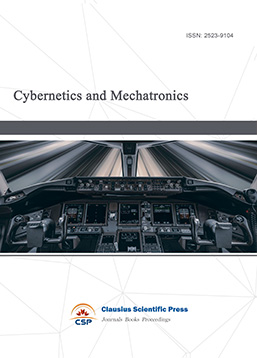
-
Digital Manufacturing and Process Management
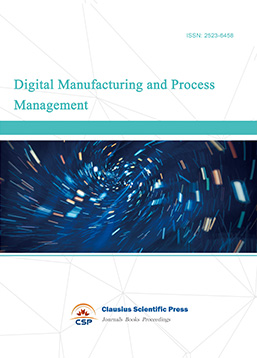
-
Ultra-Precision Machining Process

-
Journal of Robotics and Biomimetics
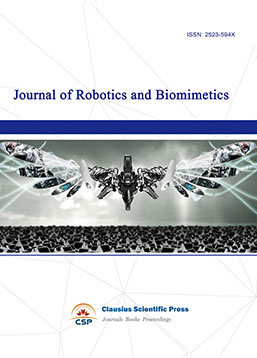
-
Prognostics, Diagnostics and Health Management

-
Micro-Electro-Mechanical Systems

-
Journal of Precision Instrument and Machinery
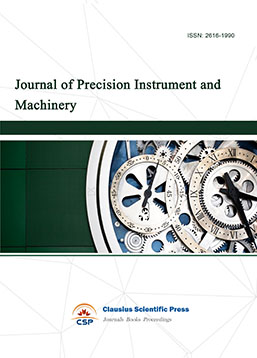
-
Engineering and Solid Mechanics

-
Fracture and Damage Mechanics
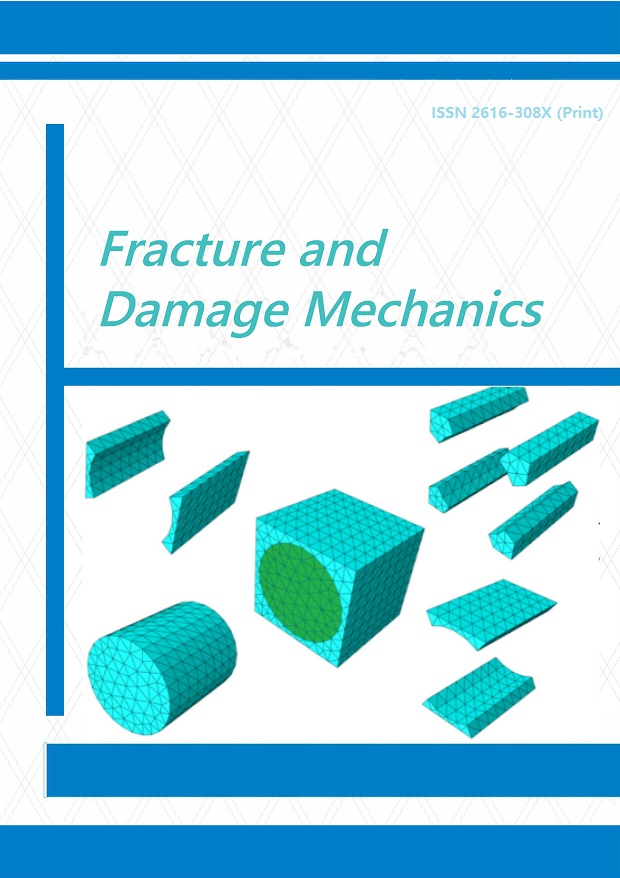
-
Frontiers in Tribology

-
Fluid and Power Machinery

-
Chemical Process Equipment
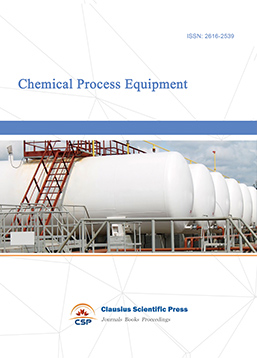
-
Journal of Assembly and Manufacturing
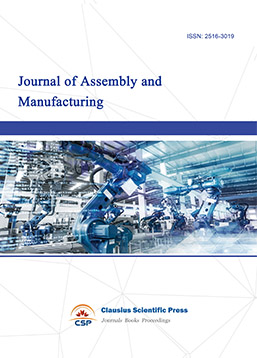
-
Mechanical Vibration and Noise


 Download as PDF
Download as PDF